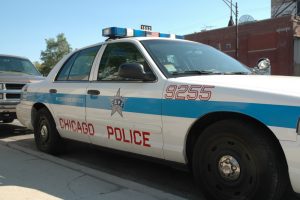Welcome June Bloggers!
We would like to welcome our guest bloggers for the month of June to the Faculty Blog.
Our Alumni Blogger for June is Kristin D. Hardy, Compliance Counsel at Rockwell Automation, Inc., the world’s largest company dedicated to industrial automation, headquartered in Milwaukee. As Compliance Counsel, Kristen focuses on the areas of regulatory compliance, third party anti-corruption, and bribery. Additionally, she handles internal ethics investigations across the global enterprise, while assisting with communications, messaging, and training related to the compliance & ethics program.
Kristen graduated from Marquette in 2014, where she served as the President of the Black Law Students Association (BLSA). She was also an editorial staff member of the Marquette Intellectual Property Law Review, and a MWBLSA Thurgood Marshall mock trial captain and participant. Kristen currently serves on the Board of Directors for the Wisconsin Association of African-American Lawyers (WAAL), an organization dedicated to ensuring diversity in Wisconsin’s legal community through community service and professional partnerships. She was recently elected to the Board of Directors for the Young Lawyers Division (YLD) of the State Bar of Wisconsin. Kristen has presented at national legal conferences, including the Association of Corporate Counsel (ACC) Annual Meeting (2016) and Chief Litigation Officer Summit (2016). More recently, Kristen was a recipient of the 2017 National Summit of Black Women Lawyers Emerging Leader Award, and a member of the inaugural class of G. Lane Ware Leadership Academy through the State Bar of Wisconsin.
Our Student Blogger for the month of June is Hannah Dockendorff. Prior to joining Marquette University Law School, Hannah graduated summa cum laude from Cardinal Stritch University with a bachelor of arts in history. During that time, she promoted education in history and science while working for the Distance Learning Program in the Milwaukee Public Museum. Hannah also has a lengthy history of serving others, for example working with Catholic Charities of the Archdiocese of Washington D.C. to integrate recently released convicts into the local community. While at Marquette, Hannah focused her studies upon immigration and other related legal matters. This resulted in Hannah providing legal assistance for the Milwaukee Justice Center, the Marquette Volunteer Legal Clinic, Catholic Charities Immigration Services, and the Wisconsin Department of Workforce Development Equal Rights Division. Hannah also was recently awarded a CALI for International Intellectual Property. Hannah Dockendorff is a newly minted May 2017 graduate of the Law School with Pro Bono Honors for over 120 honors of service.
We look forward to reading your posts!

